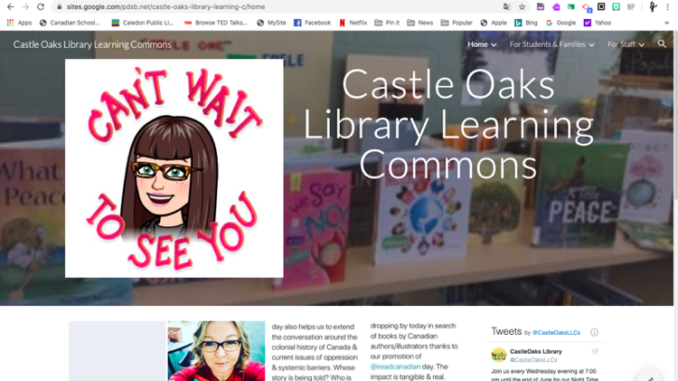
By Jenn Brown and Beth Lyons
In our current situation of emergency distance learning many school libraries have had to make the shift to maintaining a virtual library learning commons. While many school libraries already had an online presence that allowed for educators, students and the community to access resources and learning prompts prior to the pandemic, this time has offered an opportunity for school library professionals to discuss the purpose and goals of a virtual library learning commons in real time as modifications, additions and real time learning about the design of a virtual space is happening.
Teacher-Librarians from the Peel District School Board, Beth Lyons and Jenn Brown, have been engaged in updating and maintaining the virtual library learning commons connected to their schools and have been involved in collaborative webinars and discussions with other school library professionals about the sharing of ideas and knowledge as they work to better understand the goals and purpose of a virtual library learning commons and the role it can play during emergency distance learning and beyond.
“Working together in groups, both virtually and in person is the new norm. Inherent in these activities is the importance of security, privacy and good digital citizenship practices as well as effective collaboration skills and ensuring accessibility for all. A learning commons can provide both the physical and virtual learning environments as well as provide the supports necessary for the student to be an active participatory learner. “
Leading Learning: Designing Learning Environments to Support Participatory Learning
How have your expectations of what the VLLC would be, stack up against the reality of creating a virtual space? How did you envision it being used by the learning community vs how it evolved? What changes did you have to make as you went along and gathered authentic observations/feedback?
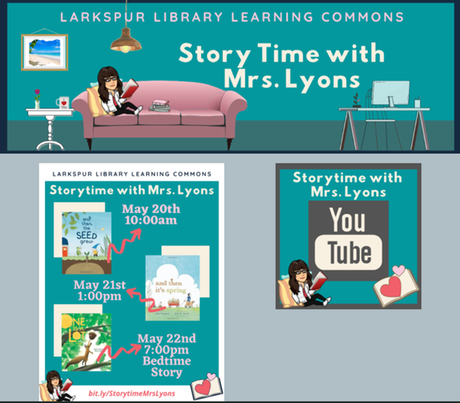
Beth: As our library began the shift to a learning commons model two and half years ago, we created a three year plan for this transition that included our vision for a virtual space. Over time as our goals and vision for the physical space began to take shape, the virtual space struggled to keep up. Initially the vision included having a current events section that outlined the daily inquiries, learning and making happening in the space but the time needed for this enterprise proved to be too daunting. At that point we shifted to using Twitter to document the day to day learning in the physical space and use the VLLC to push forward our goals related to literacy, the maker movement and learning from an inquiry stance.
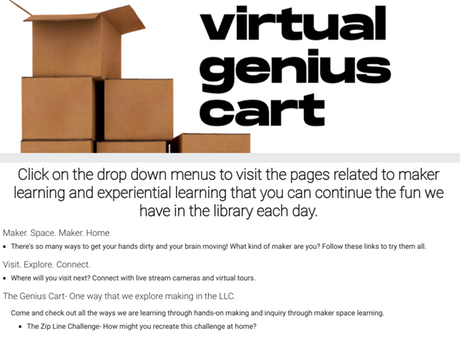
In our current emergency distance learning situation I have been able to devote a lot more time to the intentional design and layout of the virtual space. I started by asking myself how I could replicate the physical space in a virtual presence in a way that was authentic and true to the shift that had taken place over the last few years within the school community. I wanted to focus on continuing to drive a love of reading forward with the virtual site and make connections to the maker culture that permeates the Larkspur Library Learning Commons. I hope the site is a place where members of our community can go to push their learning forward, whether that’s by visiting the website and viewing a video from their favourite author, trying out a new maker skills, connecting with a curriculum area or learning more about the culture of others. As I have continued to work on the site and add our new storytime program I have found that I like it best when literacy, inquiry and maker prompts coexist on the space in order to create a rich learning experience.
Jenn: In 2015 when I had the privilege of opening a brand new library learning commons, I knew that creating a virtual presence was an important aspect of our vision. I started with social media (Twitter & Instagram), ongoing email communication with staff and contributing information about big events through our school newsletter. It was not until later in our second year that I took the leap into creating and curating our virtual learning commons site. Having become more comfortable with Google Apps for Education and Google Sites, they became my platform of choice. My initial goals were to reduce the amount of emails I was sending out to staff and consolidate all the information about extracurriculars, online research tools and accessing the library catalogue etc. for the entire learning community. I think my initial expectations were slightly optimistic. I was very proud of what I had created and Google Site use was not widespread at our school yet so I was paving the way for some staff and students simply by exploring the platform. Although feedback was positive, the everyday use of the site did not take off as I hoped. Some of the interactive aspects like book purchasing recommendations and staff requests for curated collections to support curriculum, were well used but beyond that, the impact on the learning community was minimal.
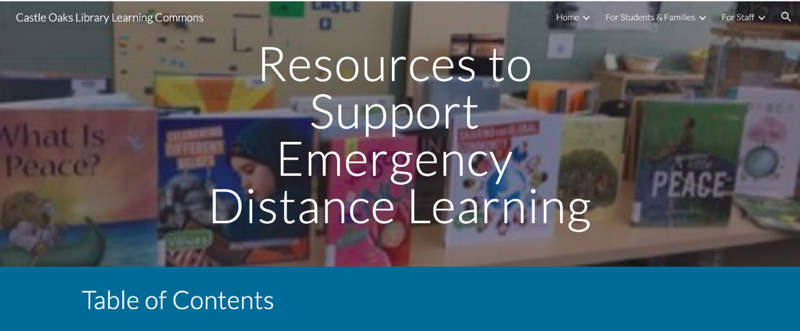
In the fall of 2019, I intentionally revisited the site, adding some additional aspects for staff around collaboration and invited staff to “relaunch” it to their students and families. We also had made the switch to using Google Sheets for all room, tech and collaboration bookings in the building so having that embedded within the site became essential for staff. This pushed me to update aspects of the site that I had neglected and make significant edits to those subpages I might have left in the “construction” phase that no longer seemed valuable. I noticed an increase in engagement with the site and found that I was suggesting it as a resource more consistently than when it was first created. Upon reflection, I had initially envisioned the site being more effective as a documentation tool and, perhaps, even co-constructed with students. As of yet, this has not come to fruition.
How might a virtual learning commons provide opportunities for participatory learning?
“It is not a replacement for the physical LLC but an extension of it to make the LLC available to students and learners 24/7.”
Leading Learning: Building a Virtual Learning Commons
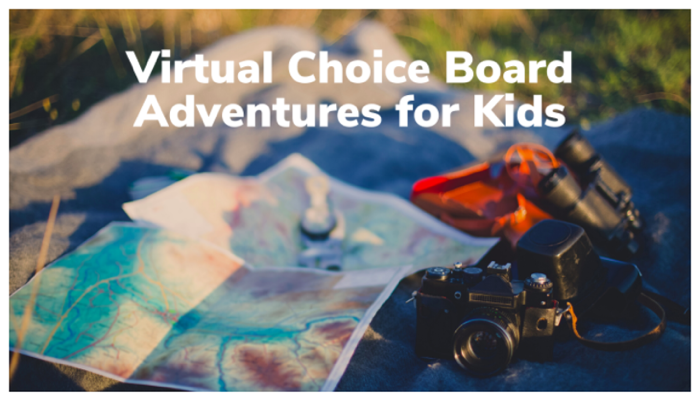
Jenn: I think the key aspect of participatory learning addressed by the creation of a virtual learning commons is instant access to curated information. Despite the inequities across society that technology can create, we must acknowledge that students, families and staff live in a world where social media, smart devices, Google searches, online shopping and beyond provide a desire for immediate responses to questions and concerns. The school library learning commons has a responsibility to stay at the forefront of changes in society and, subsequently, in the needs of our learners. Given the importance of online tools and research resources to inquiry-based, differentiated learning, the role of a school library professional to curate these tools and sources for the learning community goes outside the physical doors of our LLC. Learning happens throughout our schools and far beyond. Offering a platform for students, families and staff that consolidates the practical and sometimes overwhelming amount of online information they will need to support learning is an essential aspect of fostering participatory learning.
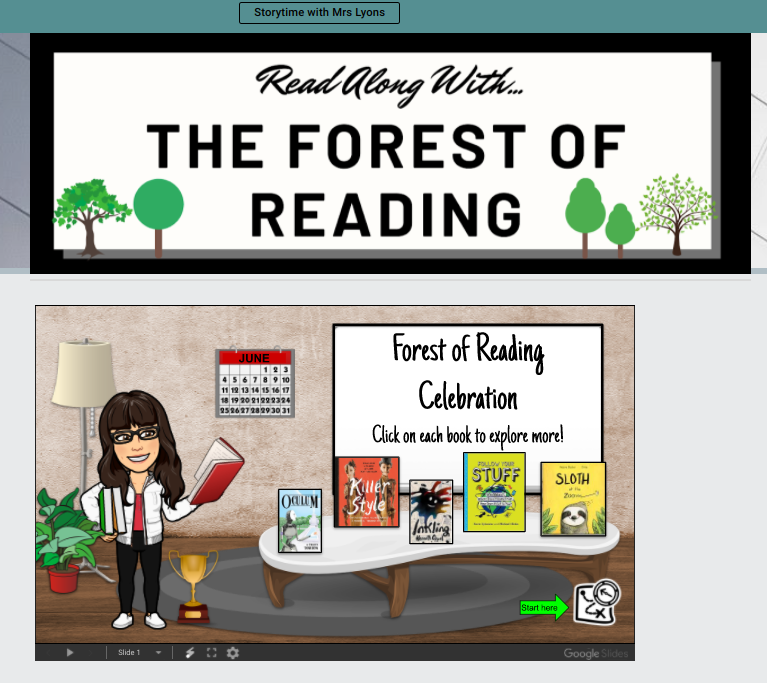
Beth: As the teacher-librarian in a very large K-5 school, I believe both the physical and virtual learning commons also provides a means to push educator thinking forward. Both can be used to provide curated lists and compilations of resources. Whether that is a physical book display in the space related to a certain topic or a page on the virtual site that highlights ideas for how educators can begin to push their pedagogy towards integrating tech and maker opportunities for their students. One way we have done this is through the creation of a virtual site dedicated to the Forest of Reading program. The site is called Tinkering in the Forest and contains links and resources for low, medium and high tech integration of maker opportunities that connect back to the books within the Forest of Reading programs. Although this site is a separate site from the main virtual library learning commons it functions much in the same way. Educators in Kindergarten to Grade 3 are able to access the site in order to find ideas for integrating their current language arts program with the Blue Spruce books using a variety of maker skills and tools. In its current form, the Grade 4 and 5 students who participate in the Silver Birch and Yellow Cedar book club are able to access the site independently in order to work toward badges that demonstrate their connection to the books they read. Unfortunately due to the job action during this school year our book club was put on hold and we were not able to continue our meetings. Hopefully, when we return to school after the pandemic we can work together to continue this learning.
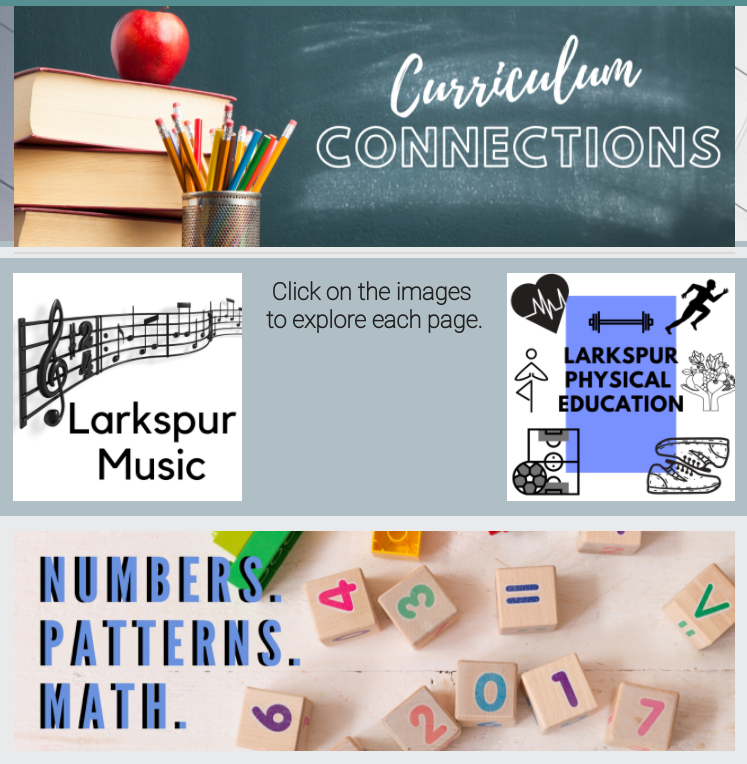
I think it’s important to take into account the materials and tech being suggested and recommended as part of the VLLC. I often try to include simple maker ideas that use common household materials, such as paper, that will not require families to purchase anything for a passion project the learner might be exploring. I also like to look for videos and prompts that lead learners towards developing a maker skill they might take forward with them throughout their life either as part of the educational career or as a pastime that they enjoy. An example of this might be finger kitting that leads to a love for fabric arts or learning cursive writing on the path to hand lettering. As a creative and crafty person myself, I know that these outlets help me to unwind and relax and that making for the sake of making is just as important (if not more so) as connecting it back to the curriculum.
What are the equity issues involved in creating and promoting a virtual LLC?
Jenn: The most obvious equity issue is access to technology and strong, affordable wifi or data for everyone in the learning community to access the site. Each board, school, family and community have different levels of access that must be considered. We cannot assume that “all kids have phones, tablets, computers etc these days”. This mindset is centred in privilege and only results in the “othering” of those who do not fit into our perception of the “norm”.
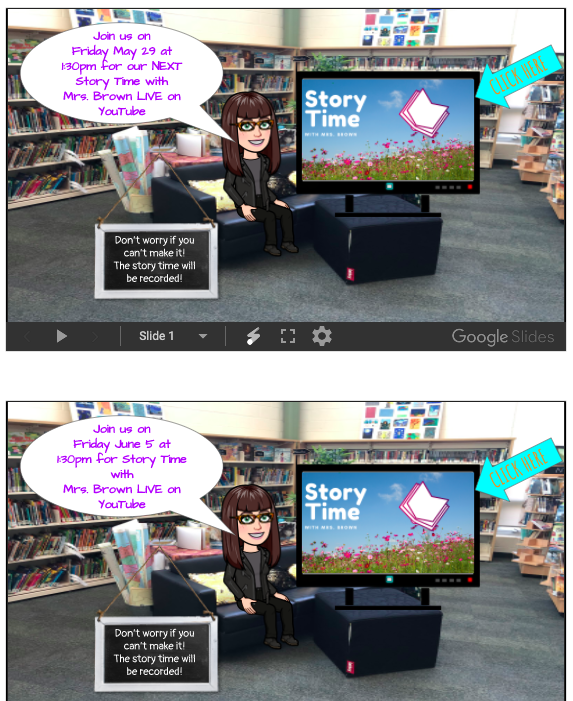
There are numerous, perhaps less obvious, issues that concern me. Language is a huge barrier for many students and families in our colonial legacy of valuing only English and French instruction. Despite my awareness of this and my ongoing plans and efforts to embed dual and multilingual tools and resources, translating the entire site into multiple languages is beyond my capability at this time. The site is not in any way fully accessible either. Visual and auditory differences are not currently addressed in the site I have created. I am working on going back and setting any YouTube videos I have included to have the Closed Captioning on as one small way I can increase accessibility and researching font choices that impact reading and visual processing differences. I have started exploring podcast style audio content as well so there are multiple access points for information.
The other major equity issue for school library professionals is time to plan, curate and maintain the VLLC. As a full time teacher librarian in a K to 8 school of close to 900 kids, I still struggle to focus on the VLLC and balance the other aspects of the library function and instructional collaboration. We know that part time teacher librarians and those school library staff who are responsible for multiple locations cannot be expected to dedicate a large portion of their library role to the VLLC. System leaders and school administrators must consider this when they discuss the value of having a virtual library learning commons for their students.
What role does a virtual LLC play in developing digital citizenship and collaboration skills?
“Virtual LLC empowers learners to co-create and share ideas and knowledge with a broader learning community.”
Leading Learning: Designing Learning Environments to Support Participatory Learning
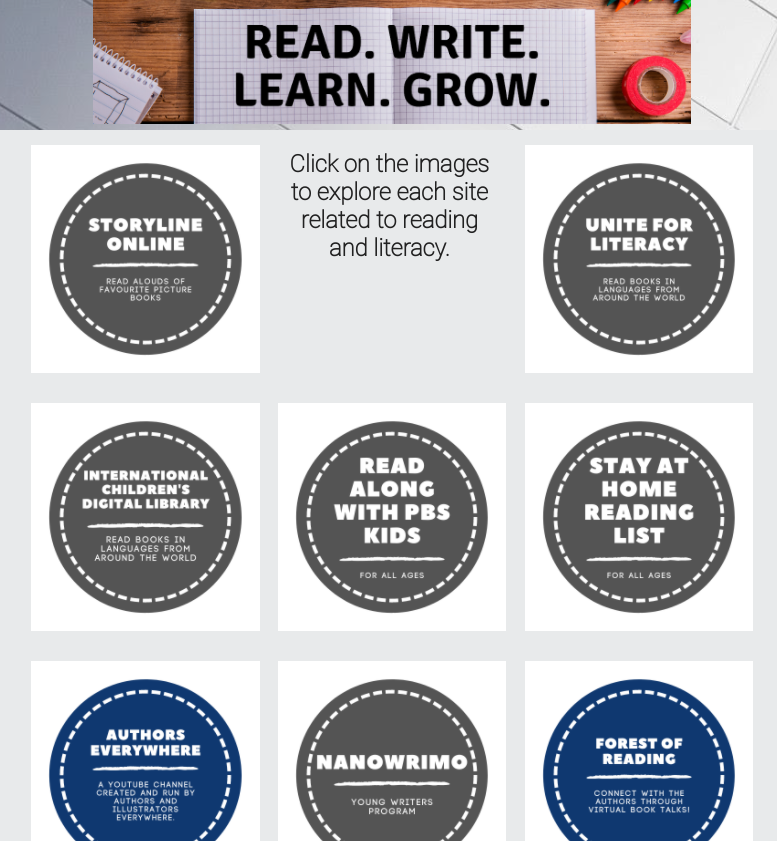
Beth: The virtual LLC provides an opportunity to showcase a balance of using technology and digital tools for consumption and creation. As I begin to curate a section of the VLLC I try to make sure that I am posting an equal amount of videos, links, or resources that might prompt or provoke a viewer into inquiry or creation. There is also a lot of scope for collaboration using tools such as Padlet, Jamboard, Google Forms, Flipgrid, etc. in order to have a variety of stakeholders add content to the VLLC based on their learning, interests and passions. As I have been curating and gathering resources and ideas as part of my Storytime with Mrs. Lyons program I am intentionally looking for apps that are free to use for families and offer a wide variety of uses, such a Chatterpix. If you are interested in exploring the idea of podcasting or having students explain their thoughts and ideas orally without using actual videos, then this app is an excellent tool as students are able to animate a photo to tell a story. On my VLLC I have prompted students to tell the story of their food and an important object in their home using Chatterpix. Providing options in this way allows families to explore a range of digital tools and to begin to see tech as a means to creation and sharing their voice, which is an empowering experience for young learners.
Jenn: One of the mottos I try to live by in my teaching practice is that I won’t ask anything of the students that I don’t expect of myself. We expect students to be both critical consumers and curious creators of online and virtual content. Exploring the creation and value of a VLLC for our school community models these expectations for the children I serve. In the long run, I still hope that our VLLC can become a more co-constructed, collaborative environment with increased student voice. In the meantime, sharing my own learning around the VLLC and thoughtfully curating its content helps to foster conversations and questions around digital citizenship and critical literacy.
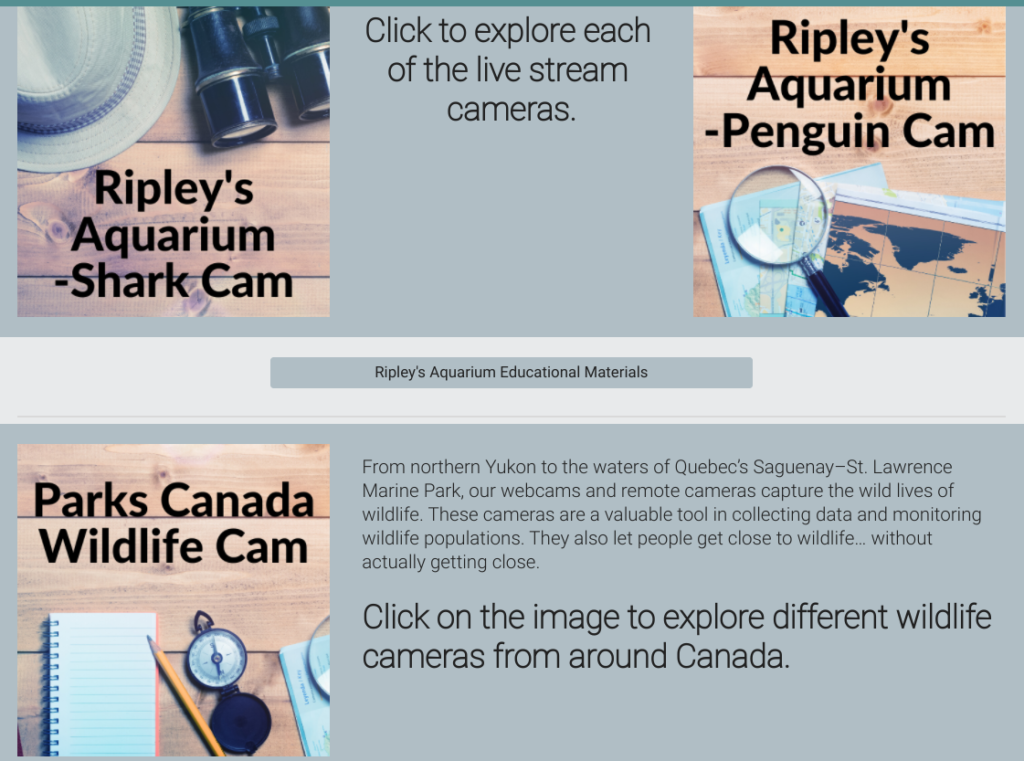
How can school library professionals work together collaboratively to help each other with the creation and maintenance of a VLLC?
Beth: In Peel we have the Peel Elementary Teacher Librarians Association (PETLA) which functions as a group to support each other in our roles as school library professionals. In Peel elementary schools are staffed by teacher-librarians while the secondary schools are staffed with both teacher-librarians and library technicians. Since we began emergency distance learning here in Ontario, the PETLA groups have been using MS Teams to hold bi-weekly meetings to discuss and offer help where needed to each other. This resulted in 8 sub-committees being created: Forest of Reading, Health and Wellness, Culturally Responsive Pedagogy, Virtual LLCs, Equitable Practices, Good News Stories, French Connections, and Read Aloud/ Copyright. Each group met separately and reported back to the larger association.
Jenn: I think, like any educational tool or practice, there is no “one size fits all” approach to what each school or district needs in a VLLC. That being said, learning from the experiences and ideas of others is essential to taking the leap into creating and curating a website or virtual platform for our school library users. Working with PETLA, as Beth mentioned, to connect with other TLs as part of our response to distance learning allowed me the opportunity not only to support others as they started their VLLC journey but also to take stock of our existing site and make changes to content, format and more. I continue to learn from the questions and ideas of others and to reflect critically on the site and its content.
Virtual Library Learning Commons to Visit
Jenn Brown: Castle Oaks Elementary School LLC
Beth Lyons: Larkspur Public School Library Learning Commons
Peel District School Board: Bringing the LLC Home
*A collection of choice boards and maker provocations curated by Melanie Mulcaster and Tina Zita.
*The PDSB also has a BYOD portal that is accessible for educators and students using their login information that contains links to online databases, the library catalogue, Google Apps for Edu and Brightspace.
Prince George District Learning Commons
*Open the School Virtual Learning Commons tab to link to the VLC sites for each school. You will discover a wealth of approaches to building VLC sites, each one different addressing the needs of their school community.
Digital Tools We Love
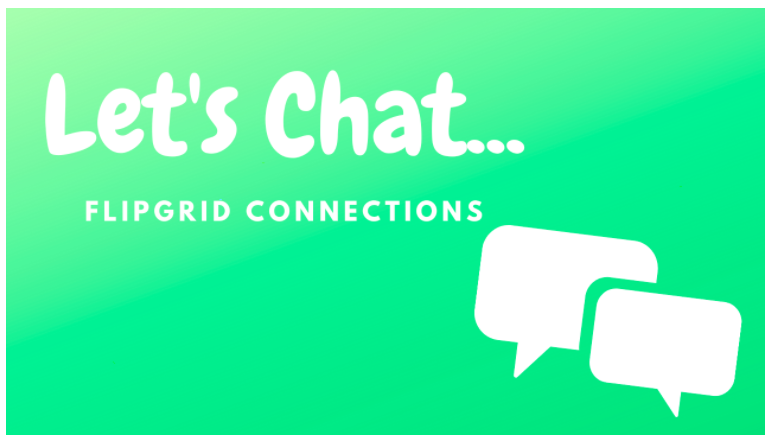
Canva
The Noun Project
Unsplash
Padlet
Flipgrid
ChatterPix
Google Apps For Education
Adobe Spark
Apple Clips
Bitmoji
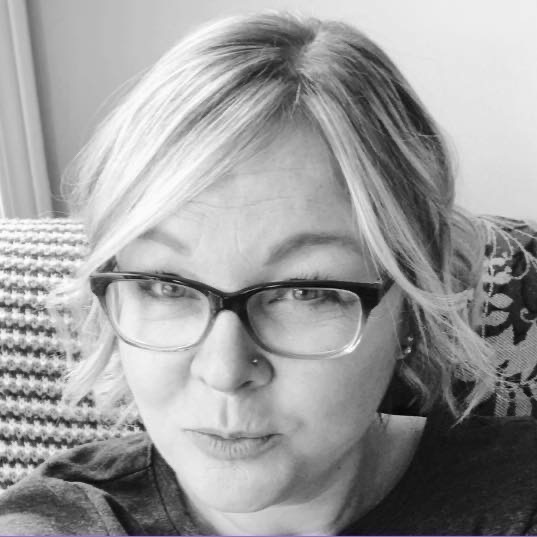
Jennifer Brown is a teacher-librarian in the Peel District School Board in Brampton, Ontario. In her current role at a K to 8 dual track school, she has the tremendous privilege of co-constructing the vision for the library learning commons with students, staff & community members. Jennifer has demonstrated a passion for & interest in social justice & equity in education throughout her more than 20 year career. Her work as a teacher-librarian reflects this dedication to equity, inclusion and student empowerment. Grounded in the vision set forth in OSLA’s Together For Learning, Jenn strives to create a library learning commons based on student voice, trust and believing in children to guide their learning. As a Librarianship Specialist, she actively engages in the ongoing study & implementation of innovative pedagogical practices in the school library learning commons to support & mentor fellow educators & foster student success. Jennifer was the 2019 OSLA President, a contributor to both The Teaching Librarian Magazine & Open Shelf, the OLA online magazine, as well as a steering committee member for the Peel Elementary Teacher Librarian Association. Through the incredible school library community, Jennifer has had opportunities to speak at OLA Super Conference, Quebec School Librarians Network Symposium, Quebec Library Association Annual Conference, ETFO Summer Academy, York University AQ Librarianship Combined Parts 1/2/Specialist, MakeChange Toronto Conference and MakerEd Toronto Conference as well as participate in various podcasts, events and review committees. Connect with Jenn on Twitter @JennMacBrown
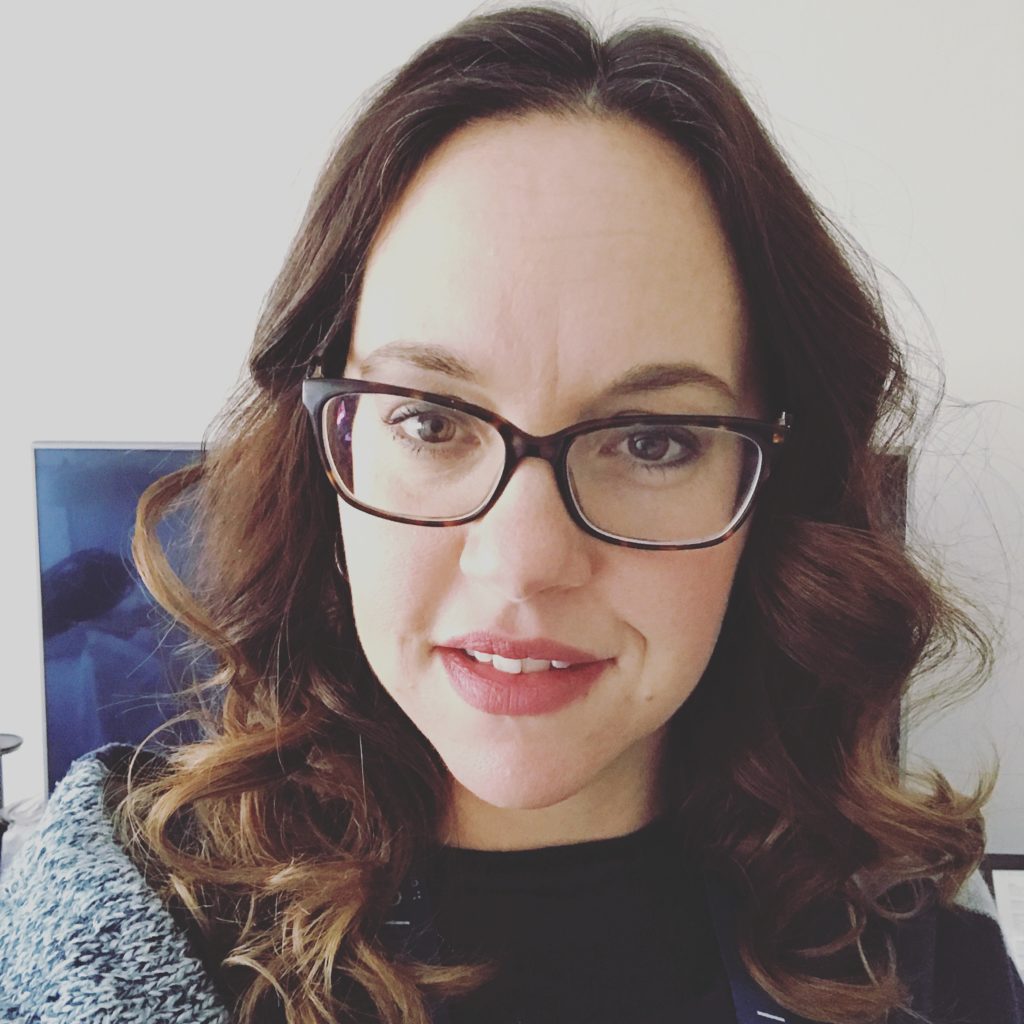
Beth Lyons has taught in the Primary, Junior and Intermediate divisions and she is currently the teacher-librarian at Larkspur Public School in the Peel District School Board. She believes in being open about her own learning journey as an educator and a teacher-librarian and reflects on her time in the Library Learning Commons on her blog The Librarian’s Journey and on Twitter @MrsLyonsLibrary. She is passionate about helping others find what they love to read and embracing their inquiry mindset. She has been actively involved in the transition of the Library Learning Commons at Larkspur Public School and sees the role of the teacher-librarian as a curator, an advocate, a risk taker and an ally. Beth believes in encouraging students and educators to bring their voice and ideas into the LLC as the space continues to evolve. Whether through loose parts, photography, art, STEAM and other mediums, she loves to connect and share ideas on social media.